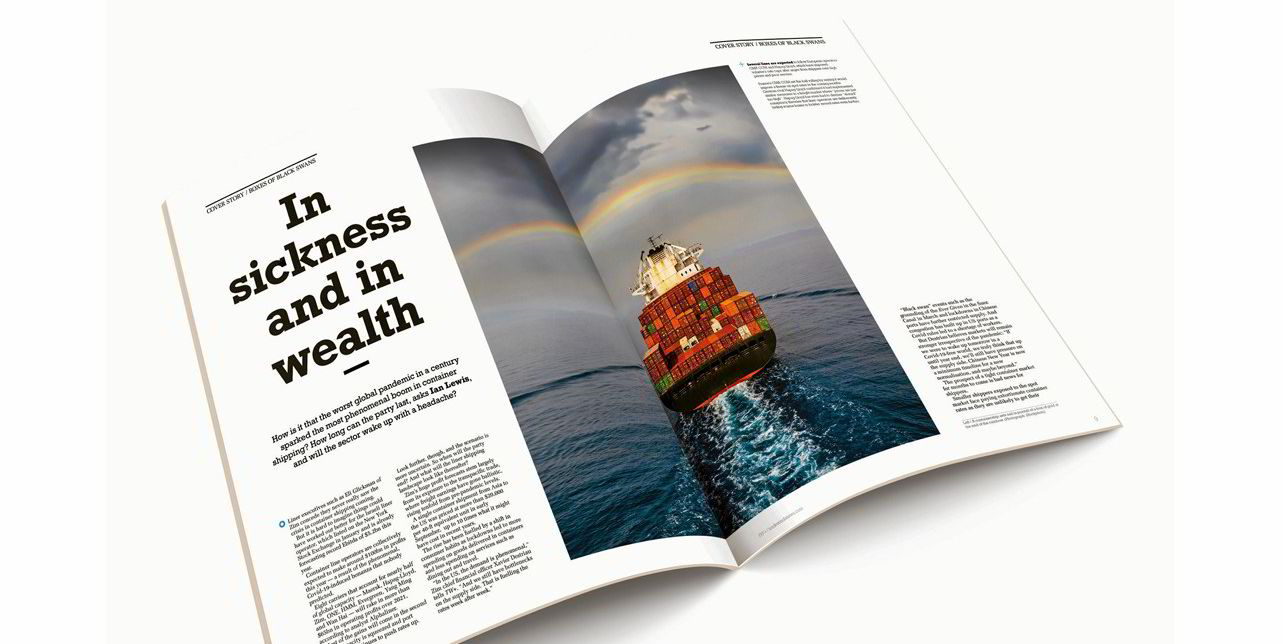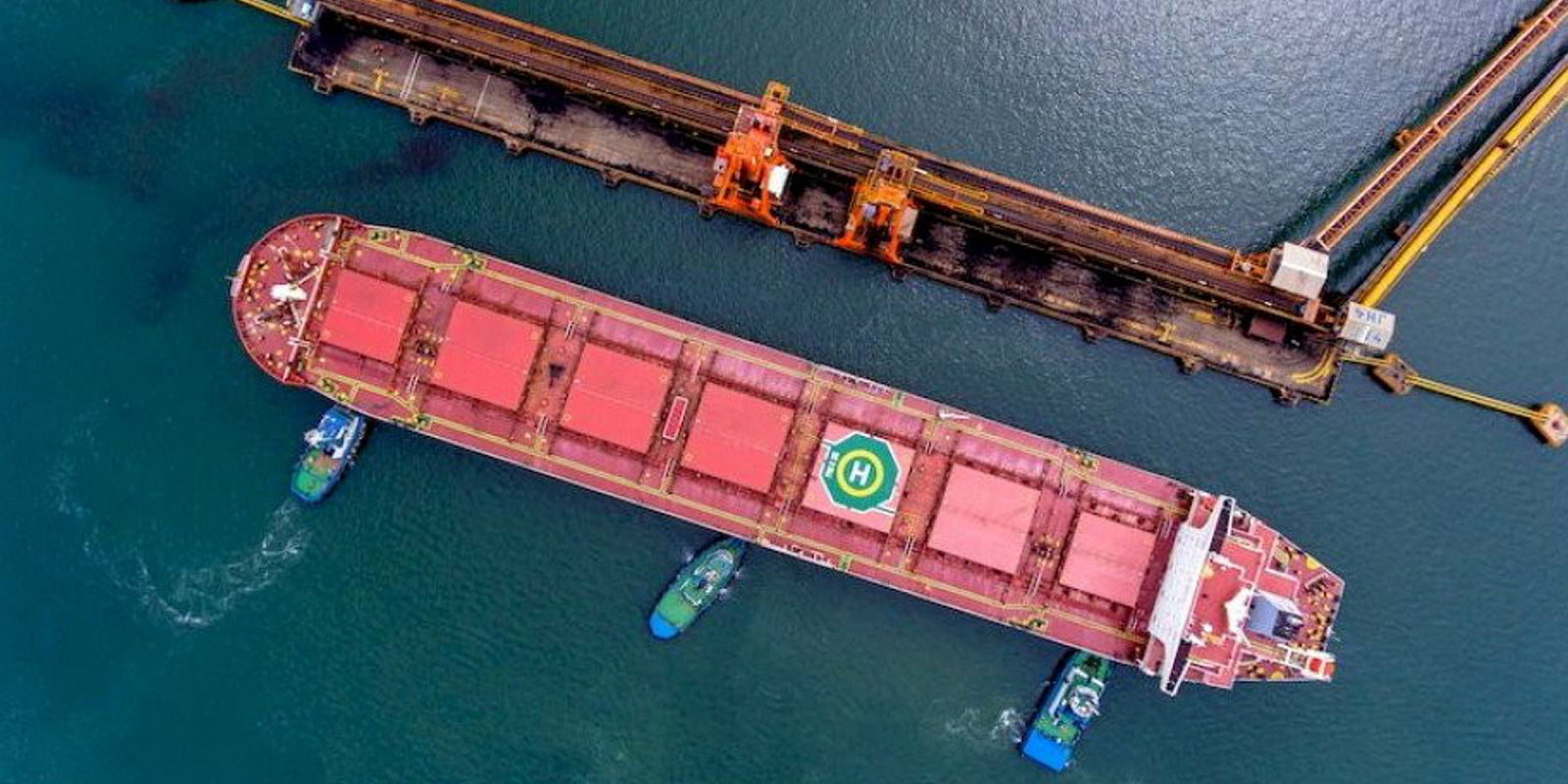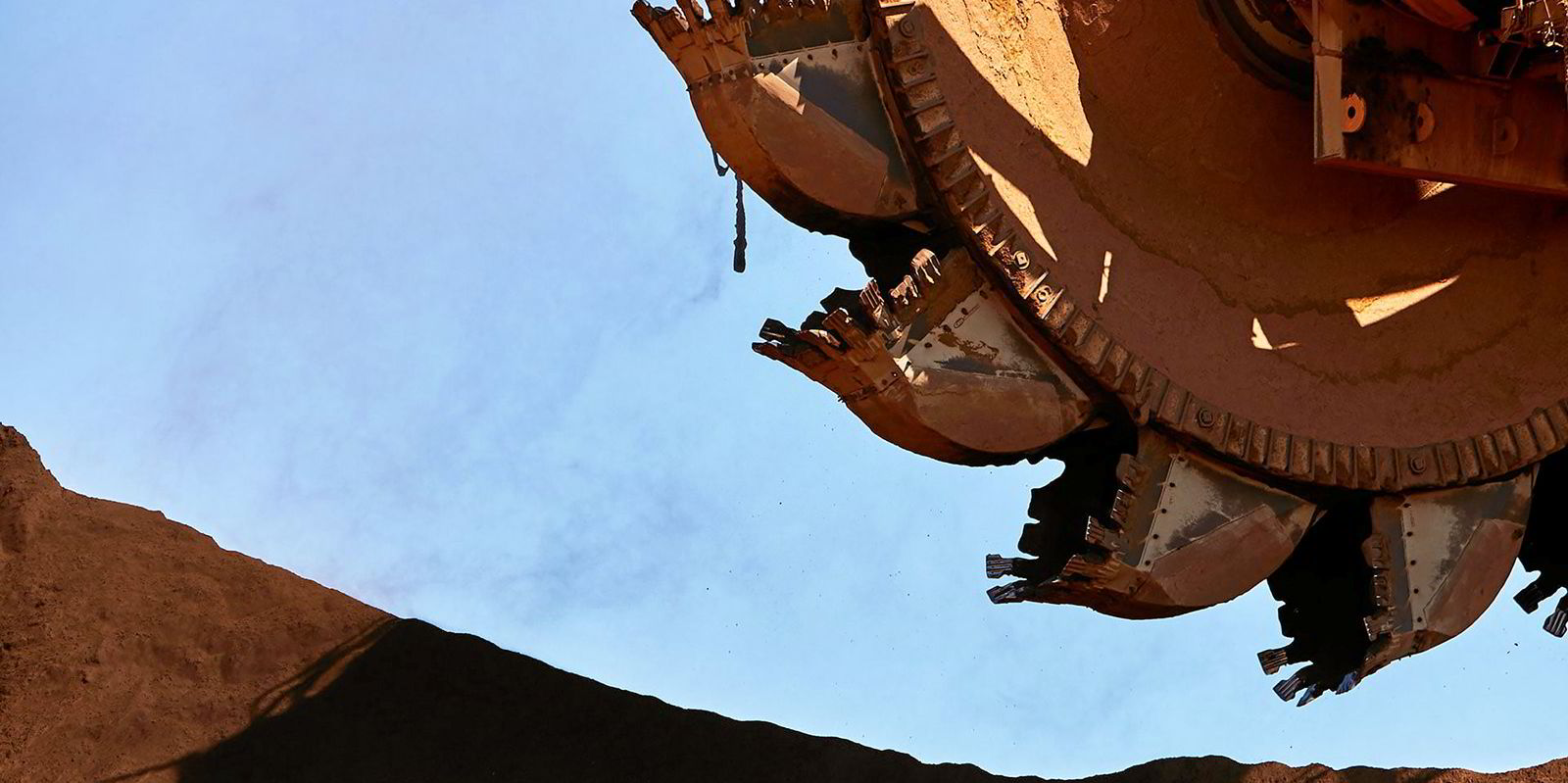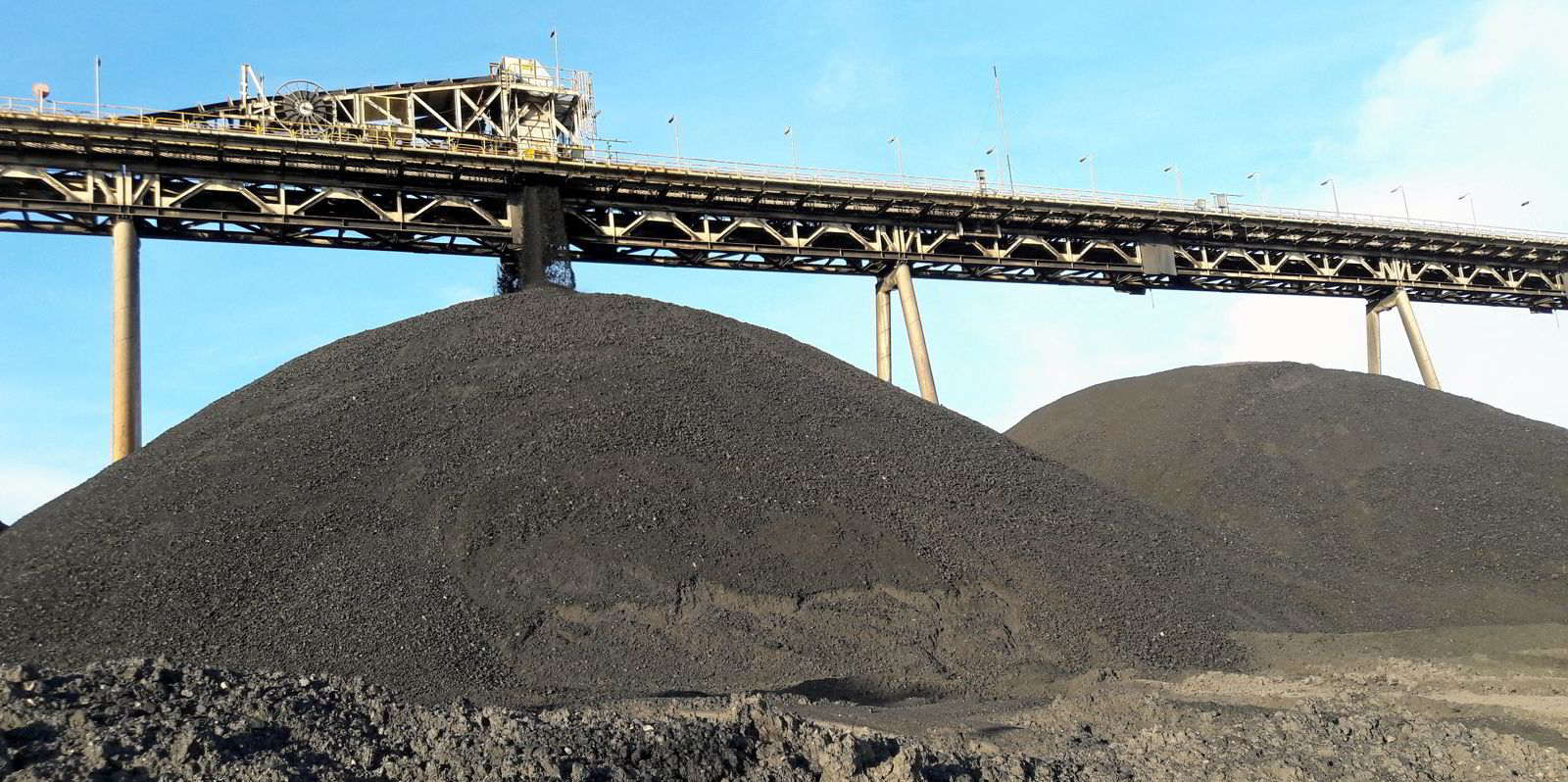As bulker rates rise, seasoned market sources are describing 2021 as “just like 2006” — the year before momentum in the cycle really hit its stride.
With spot rates at some of the highest levels in at least 11 years, it could be easy to forget the world has been enduring a pandemic for more than 18 months.

This story is part of the upcoming edition of the TW+ magazine, which unpicks the changes that have occurred over the past 20 months as a result of Covid-19, investigates how shipping is still being reshaped and tries to find out what the permanent effects may be.
Uncertainty and work stoppages depressed bulker markets in mid-2020, but all that pent-up demand unwound this year. An inefficient market in which many vessels are stuck for long periods in port congestion or quarantine is the result of Covid-19.
Peter Sand, Bimco’s chief shipping analyst, thinks it is impossible to compare the world before Covid with what we see today.
“What Covid has done to the market more than anything is make it operate in a very inefficient manner,” he tells TW+.
“Floating quarantines, geopolitical disputes disrupting trade lanes and all growth happening in the Far East, which has been jam-packed with handysizes and supramaxes for all of 2021.”
The shifts in shipping and commodity markets may feel tectonic, but it would be easy to be mistaken, according to Sand.
“I think the talk of a commodities super-cycle spooked a lot of people, most of them with little knowledge of shipping.
“The inflation in freight rates that followed on from the inflation in commodity prices was much welcome. But it must not be translated into someone thinking this is a new dry-bulk super cycle — because it’s not.”
The last “true” commodity super-cycle was during the heady days of 2007 and 2008, when bulker markets peaked, powered by China’s infrastructure buildout and the demand for ferrous-complex commodities that it entailed.
Chinese hunger for iron ore and other commodities has been strong since 2020, driving its industrial production and economic growth. Bulker rates this year have risen to levels not seen in more than a decade.
Imports of iron ore to China totalled 620m tonnes in the second half of 2020, up by 38m tonnes from a year earlier, according to Kpler.
Reid l’Anson, an economist for Kpler in Houston, thinks that will change in the longer term — and believes 2020 was sown with clues as to why.
“Plateauing Chinese growth helps to explain the recent degradation in iron prices, though with offtakes finishing down year on year in each of the past three months, ending in August. [It is] a sign that another strong second half [2021] of import growth is unlikely,” he says.
“A similar trend was true of copper, which has rebounded on robust demand out of China, helping to push prices to multi-year highs. But it should be noted that copper prices have managed to maintain at relatively elevated levels despite recent Chinese weakness.
“The reason for this largely has to do with distinct supply-side constraints over the long run, as well as a brighter future, given the likely buildout in green infrastructure in the West.”
This delineation is important.
“Dry bulk commodities that are less reliant on Chinese growth (ie, those that could see a large pick-up in demand on Western renewables infrastructure spending) face a ... more positive outlook relative to those — iron ore, coking coal — that are highly dependent on Chinese consumption,” l’Anson explains.
“Moving beyond copper ... more specialised minerals, like cobalt and lithium, are likely to enjoy a positive future, whereas commodities like thermal coal face a far more uncertain future, given dwindling sources of demand growth.”
India and China are likely to be the main drivers in demand for thermal coal, he adds.
Covid has also made the world a more cautious place, especially with respect to government policy.
Now major importers and national governments are planning ahead to mitigate against other potential shocks. One of which could be food supply.
Food prices were relatively unaffected by the pandemic at the global level last year, despite announcements of policy restrictions early on and some supply chain disruptions.
But food prices crept up towards the end of the year due to lower edible oil production and a weakening US dollar, according to the World Bank. South Asia, sub-Saharan Africa and Latin America were among the worst-affected regions.
The World Bank expects the pandemic to cause a rise in food insecurity and malnutrition. It estimates that an additional 130m people will face chronic hunger and malnutrition because of the economic impacts of Covid-19.
Major economies take action

Already, major economies such as Japan and Russia are adjusting policy to mitigate potential shortages in food supplies and commodities.
Markets are well supplied for the time being, and although food commodity prices have risen sharply in 2021, they are expected to stabilise in the next 12 months or so.
But as the world ponders how to secure its food supply chains, prices for agricultural products and fertiliser — as well as freight rates for the bulkers that carry these commodities — are expected to remain high.
Tom McIvor, a phosphates specialist at commodities markets analysis house CRU Group, tells TW+ the pandemic had a limited immediate impact on grains and fertiliser demand, but the effects are still shaking out.
“As essential commodities, governments prioritised these products and only a few countries were impacted, mainly in the first lockdowns, with Hubei phosphates production hit at the beginning of the pandemic and supply from phosphate rock mines in Peru halted in the second quarter 2020 on the surge in cases there,” he says.
Extra government support for agricultural producers, stockpiling and weather concerns last year caused crop prices to “skyrocket” and fertiliser affordability reached its most attractive level on record in late 2020, according to McIvor.
Supply chain inefficiencies

Consequently, suppliers of grains and fertiliser were able to adapt to the “new world” of Covid-19 and its extra costs and checks by the beginning of this year.
But the pandemic has deeply affected logistics and created inefficiencies in supply chains.
Freight rates and highly favourable crop prices are expected to remain over the next 12 months or so, helping keep fertiliser prices high, McIvor says.
“After that, it’s hard to say whether there will be any lasting impacts from Covid-19 on the agricultural and fertilisers markets. I suspect not, as demand/supply remain the main drivers — the global fleet increases and the supply chain adapts.”
Sand and Russell Thompson, managing director of trade data platform Tradeviews, agree: there is no “new normal” for shipping after Covid, simply a world that has its complexities exposed for all to see.
Dry bulk owners have had a once-in-a-decade profit bonanza
Russell Thompson, Tradeviews
“I find the term ‘the next normal’ somewhat more appropriate, as any new steady-state normality will not be found,” Sand argues.
“But what is common for all of the coming normal: more geopolitical aspects will generate volatility (positive for freight rates), coal trading will change (negative for freight rates), tighter regulation on emissions from shipping (positive for some, negative for others).”
Thompson thinks the situation is still evolving and it is unclear whether it will ever end, or whether human activity will simply adapt.
“The greatest long-term impact we have to manage is the start of a decarbonisation process, which will reshape our ships and the cargoes we carry,” he says.
“The pandemic has shown us as a species we can adapt and therefore the wheels of change seem to be moving faster.”
The same is true for shipping markets, according to Thompson: “It’s always impressed me how robust dry-cargo shipping has been, due to the diverse cargo groups.
“The main segments — energy, agriculture, manufacturing and construction — have different drivers and have moved at different paces throughout the pandemic. If one falls down, the others compensate.
“This is because the way the world operates has changed. So while the service economy suffered, the physical economy boomed as people have excess cash to spend and governments have employed stimulus measures into physical projects. As a result, dry bulk owners have had a once-in-a-decade profit bonanza.”
In Thompson’s view, the pandemic has exposed the complicated nexus of factors in which shipping is entangled.
“Covid has also shown us that freight-rate drivers were more complicated than we imagined,” he says.
“For example, commodity price changes have influenced trader activity, pushing up the market, while inefficiencies in crewing and scheduling created tighter markets.
“Not everything is about classical supply and demand.”
Read more
- Wine to water: 20 questions with Esben Poulsson of the ICS
- Shipping finds itself fast-forwarded into a digital future
- Cruise is setting sail on an ocean of debt, so why is it so optimistic?
- That’s oil, folks! The sun is slowly setting on tankers
- Remote possibilities become reality as shipping embraces digital surveys
- Building back better: Shipyards weather the pandemic
- Farmers take the bull by the horns in shipping showdown








